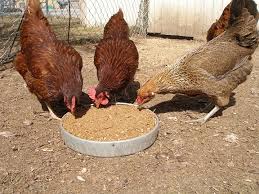
The move by the government to remove Value Added Tax (VAT) from animal feeds’ ingredients in its 2018/2019 budget if fully implemented will see livestock farmers and investors in the agriculture sector find it easy to manufacture own feeds lowering buying costs.
More than 50 per cent of the feeds’ ingredients are imported from the regional neighbours, especially Tanzania, Uganda and Rwanda and the prices of the materials keep on increasing depending on their availability, according to experts.
However, with the removal of VAT on the raw materials, players in the sector are set to save 16 per cent from the overall cost of the materials though an increase in price in some other key ingredients will quickly wipe out such gains.
For Esther Ng’ang’a, a dairy, pigs and poultry farmer from Gathiga, Kiambu County, the cost of her animal feeds has been an issues. For 38 years she has been in the venture, Esther recalls how animal feeds were available an affordable some years back.
“When I started serious farming in 1980, two 70kg bags of poultry feeds was sold at Sh1000 and they were of quality as compared to Sh3000 per 70kg bag of the feeds that I buy today whose quality is also compromised,” said Esther.
According to a research published last year by a Kenyan NGO, Kenya Market Trust, out of 200 feeds manufacturers in Kenya, only 10 per cent are able to consistently manufacture feeds that meet quality standards. There are genuine reasons for that.
Esther retired as a secretary from the Ministry of Works in 1980 to focus on farming within her one acre piece of land which is currently accommodating over 800 birds, 20 pigs and 28 piglets, five dairy cows and five calves.
Esther sells her fully grown pigs weighing between 65 and 70 kilos at 260 per kilo to Farmers Choice. She also milks over 84 litres of milk per day which she takes to Kabete Dairies Cooperative at Sh350 per litre.
RELATED STORY: Farmers invest in homemade livestock feeds as prices skyrocket
However, she says that getting the litres of milk is not easy as there are other supplements such as maize jam, yeast, molasses, salt and flour that must be added in the cows’ diet to up milk yields.
“I buy 20 bales of hay at Sh300 per bale that last for about a week but the grass only cannot give me the desired outcome, I have to supplement it with other ingredients to suit the animals’ diet,” said Esther.
In other countries like the US farmers grow cereals and other ingredients for largely livestock but in Kenya, 98 per cent of maize grown is for human consumption. This is why when there is scarcity, human food gets preference over the animal feeds
With Kenya’s GDP growing at 4.5 per cent, the population growing at 3 per cent annually and urbanization soaring, these are metrics enough to proof that demand for protein sources will increase tremendously in the future. More milk, more eggs, more poultry, beef, and pork will be required to feed the growing middle class.
RELATED STORY: Farmer earns Sh100,000 a month from selling pig, cow and chicken feeds
These trends put the industry in a pole position both for national food security and investment. The government is therefore racing new efforts towards removing bottlenecks that would discourage investment in this sector.
Seaboard Corporation, from the USA, has shown strong desire to increase their interests in Unga Holdings. In 2016, Land O’ Lakes, the fifth largest feeds manufacturer in the world, also from the USA, bought half of Bidco Africa’s feeds company.
Since then, they have invested Sh14m in ultra-modern laboratory and are now building Sh1bn feed mills in Nakuru. New investments in the sector will sure improve quality, production efficiencies, and offer better value to farmers.
RELATED STORY: Company opens new lab for animal nutrition to ensure higher quality feeds at low cost
New investments are also happening in commercial production of quality fodder like alfalfa to supplement animal feeds. However, not much investment and attention is being given to growing of animal feeds specifically cereals, that would ease competition with human food. In most developed countries, the increase in production and consumption of cereals for both food and feeds occurs together
















Comments powered by CComment